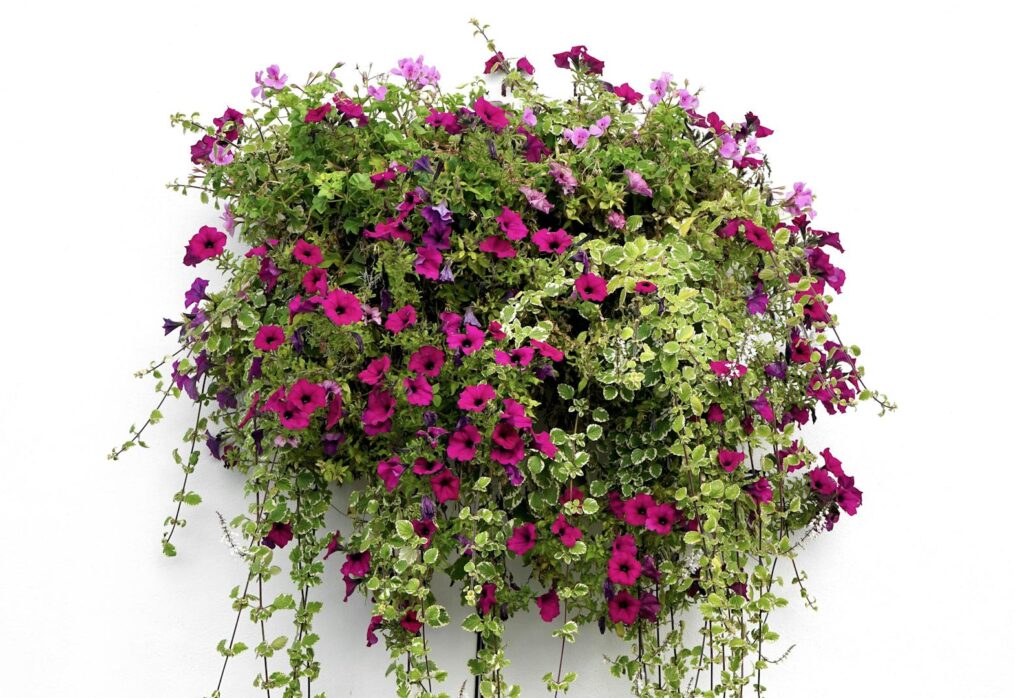7 Best Low-Maintenance Outdoor Hanging Plants for Your Home
Have you ever dreamed of creating the most spectacular outdoor garden display? Outdoor hanging plants are a great way to add flair, elegance, and simplicity to any space. We highly recommend them! “What makes them so special?” is a natural question to ask. Yes, we are available to respond to any inquiries you may have.
• Houseplants on Hanging Ropes: A Unique Interior Design Choice
Hanging plants are stunning in their own right, with their trailing charm and drooping tendrils providing a touch of natural beauty. Just be sure to maintain these plants outside, and you’ll be good to go! These beautiful plants can have it both ways: more seclusion and eye-catching displays created by their delicate tendrils and vibrant foliage or blooms.
Enhance your outdoor spaces with beautiful outdoor hanging plants that add a touch of nature to any setting. If you’re looking for low-maintenance outdoor hanging plants, we offer a variety of options that thrive with minimal care, making them perfect for busy homeowners. These hanging plants for outdoors not only brighten up your garden but also require little attention, making them ideal for those seeking low maintenance outdoor plants. Whether you’re looking to create a cozy patio or add greenery to your balcony, our selection of hanging plants outdoor will transform your space effortlessly.
Outdoor hanging plants are sure to win your heart for the following reasons:
1. Inspiration for interior design
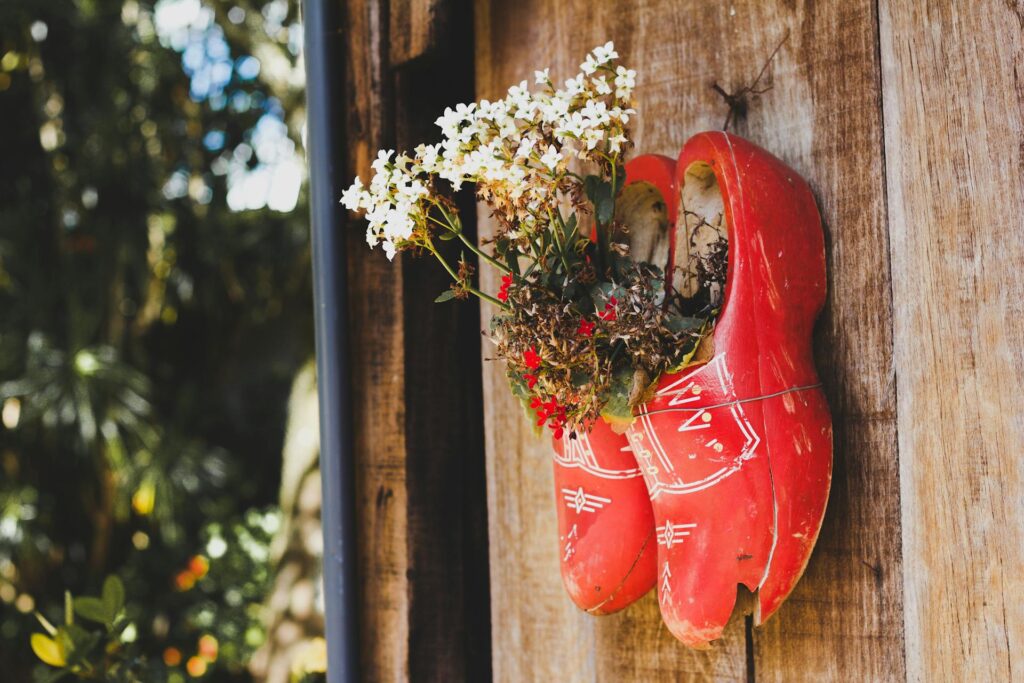
A. Versatile aesthetics Variety and customization choices are never a problem with hanging plants! Whether you’re searching for flowing foliage or dazzling blossoms, there’s a hanging plant to fit all your demands. They come in a variety of sorts, colors, forms, and sizes, providing you with the flexibility of never-ending choices.
B. Vertical Interest Outside hanging plants add a new type of depth and dimension to any place, making it feel more lively and welcoming. Wherever you’re seeking to position these plants, they may always be arranged more strategically, making your area appear bigger and brighter. Additionally, hanging plants readily create a more relaxed and tranquil ambiance.
C. Space Optimization In modern metropolitan environments, hanging plants are like a godsend. If you’re running out of ground space for decorations, just look skyward! Hanging plants offer a method for boosting greenery without sacrificing any extra floor space. By suspending plants from railings or ceilings, you may create a verdant sanctuary even in small settings.
2. Privacy
A. Natural screening As we indicated, judicious arrangement of plants is usually advantageous. However, with outdoor hanging plants, such positioning may work like magic! Placing outdoor hanging plants strategically might help create a sense of solitude on your balcony. Opt for thick foliage or trailing vines to establish a natural barrier that conceals you from prying eyes while also increasing aesthetics.
B. Noise reduction The thick foliage of luxuriant plants may help absorb sound, giving a calm respite from urban noise pollution. You can pick plants with wide leaves or dense growth patterns for optimal acoustic advantages. After all, what’s better than a noise-less, quiet moment in your own space?
3. Low maintenance
A. Resilient Varieties Selecting the best minimal-care Outdoor hanging plants is important for hassle-free balcony gardening. So, remember to select plants like pothos, spider plants, or succulents that grow with minimum maintenance and are hardy to outside environments.
B. Easy accessibility Maintaining outdoor hanging plants is straightforward owing to their high positioning, minimizing the need for bending or kneeling during typical maintenance duties. Simply water, trim, and fertilize as required without hurting your back or knees.
4. Hanging flower plants for balcony spaces
A. Seasonal Color Incorporating hanging flower plants offers a burst of seasonal color to your balcony design, improving its visual attractiveness throughout the year. You might choose blooming species such as Petunias or Geraniums for their continual blooms and brilliant hues.
B. Pollinator Attraction Flowering hanging plants not only adorn your balcony, but they also attract vital pollinators like bees and butterflies. Create a pollinator-friendly habitat by integrating nectar-rich blooms that assist local animals.
The Best Low-Maintenance Outdoor Hanging Plants You Can Choose From Here are seven of the greatest outdoor hanging plants you can select from that will enable you to create a magnificent, bright display:
1. Ferns
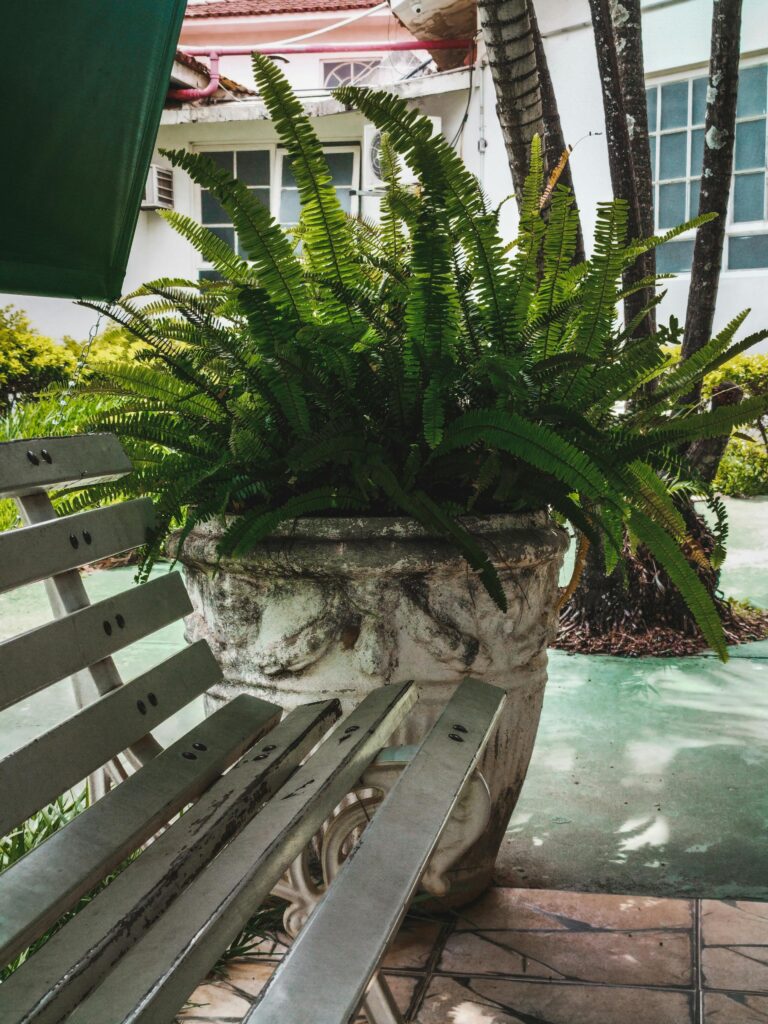
• Where to Place Ferns grow in shady or partially shaded environments, making them perfect for balconies or patios with indirect sunlight. For the greatest, longest-lasting displays, you may hang them under awnings, in alcoves, or on the north-facing side of buildings.
• Basic Care Ensure your fern plants receive sufficient airflow to prevent fungal illnesses, and water these plants regularly, keeping the soil constantly damp but not saturated. Additionally, offers periodic misting to maintain humidity levels.
2. Spider Plants
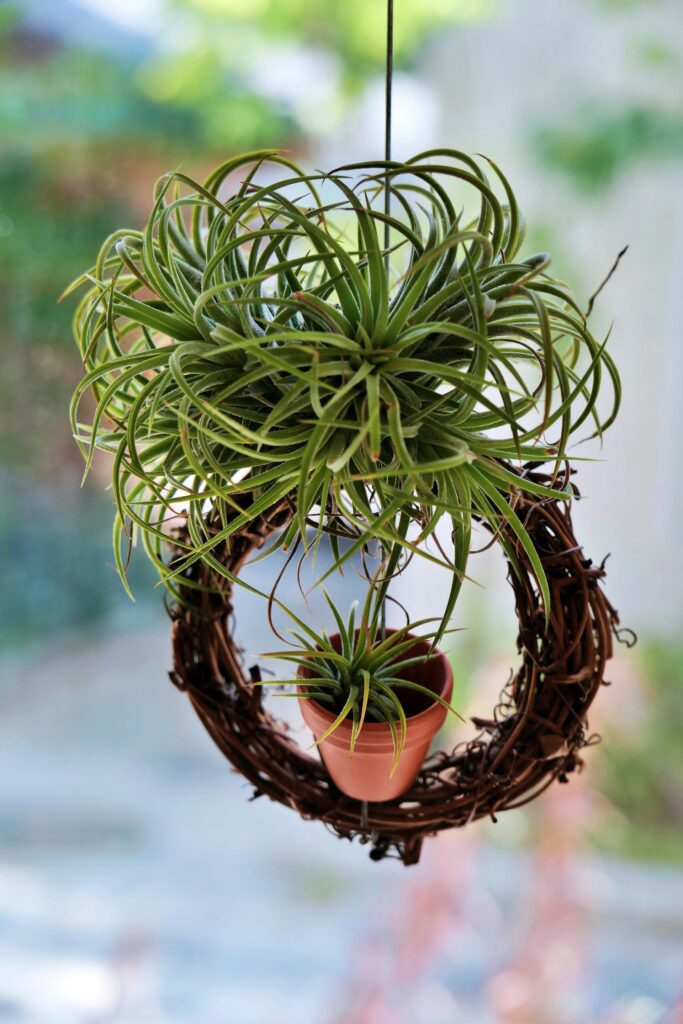
• Where to Place Spider plants flourish outside in somewhat shaded settings, such as beneath trees or on covered porches. So, you may hang them on patio railings or overhangs to provide vertical appeal. If you have outdoor places right outside some windows that receive just enough indirect sunshine, you may make a spectacular show for these quick growths there as well.
• Basic Care Water your spider plants when the top inch of soil is dry, generally monthly. Use well-draining soil and fertilize every 2–4 weeks during the growth season. Spider plants like temperatures between 60 and 75°F (15 and 24°C) and moderate humidity, as well as frequent trimming of yellow leaves and lanky stems to preserve their beauty.
3. Pothos

• Where to Place Pothos grow outside in bright, indirect sunshine or moderate shade. As a result, you can hang them on covered patios, behind awnings, or in shady garden nooks. Their cascading vines are simply perfect for lovely outdoor displays, contributing to your sense of solitude.
• Basic Care Water your pothos when the top inch of soil is dry, generally weekly, providing excellent drainage. Make sure to use well-draining soil to minimize root rot and fertilize regularly during the growth season. Pothos withstand a broad variety of temperatures and prefer moderate humidity. Remember to trim your plants to manage growth and remove any yellow leaves for optimal health.
4. A String of Pearls
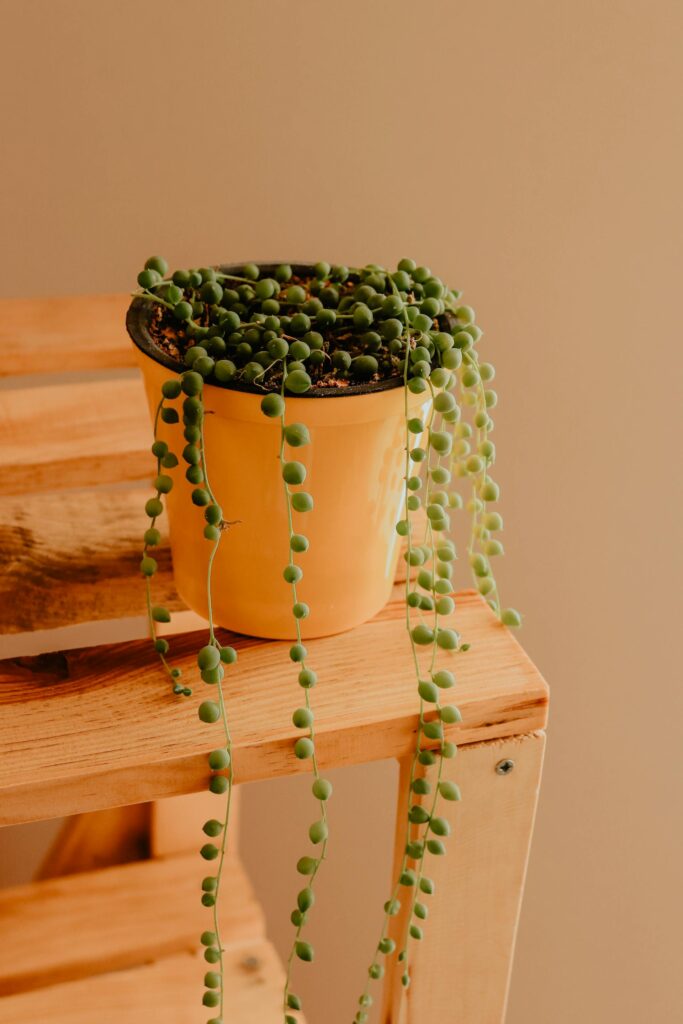
• Where to Place String of Pearls plants also flourish in bright, indirect light or partial shade. Their stunning cascading, bead-like foliage adds beauty to vertical areas and garden borders. These can also be put outside of windows that get shady sunlight or on patios where the rays are filtered.
• Basic Care Water your String of Pearls when the top inch of soil is dry, often every 2-3 weeks, providing well-draining soil. During the growth season, fertilize regularly with a balanced fertilizer. They enjoy moderate temperatures and humidity levels. Prune them to retain their trailing curve and remove any fading leaves for maximum development.
5. Philodendron {Trailing Varieties}
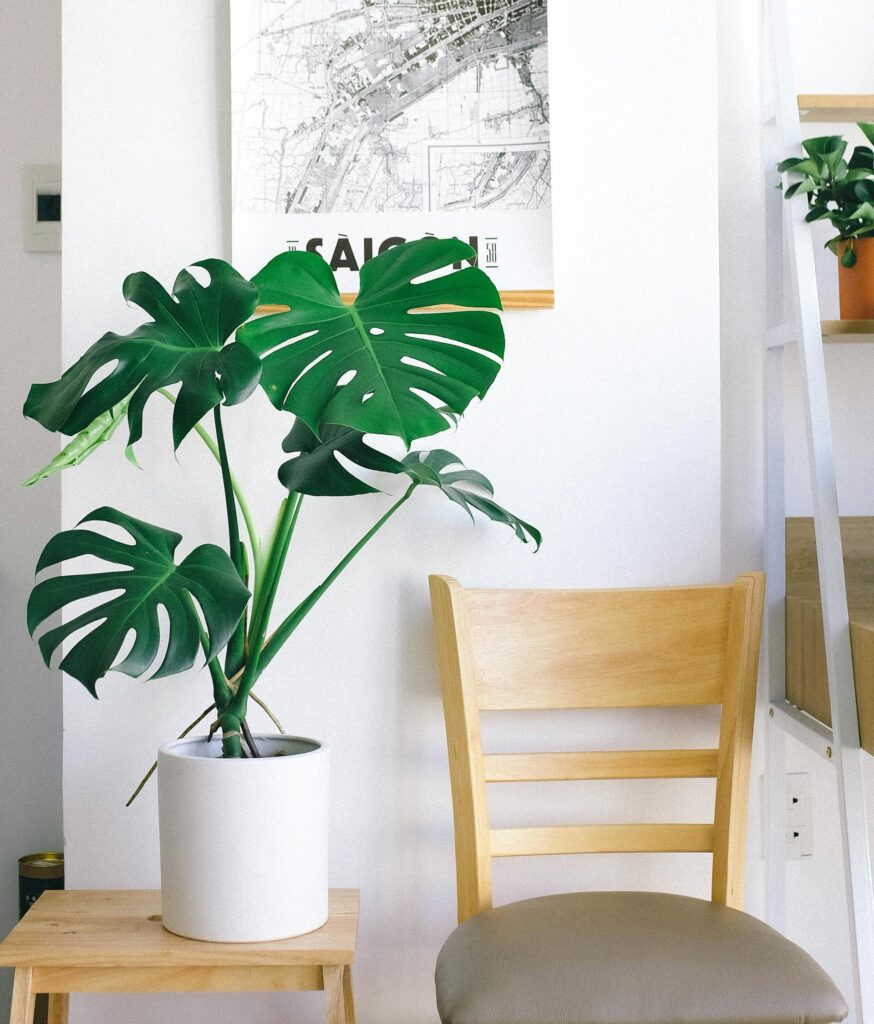 Philodendron plants adore remaining indoors, but when put in the right environment, they can also make fantastic outdoor hanging plants. They perform nicely in somewhat shady settings with filtered sunshine. You can place them anywhere outside with some sunshine. Their dense foliage adds a lovely tropical flavor to both vertical areas and garden borders.
Philodendron plants adore remaining indoors, but when put in the right environment, they can also make fantastic outdoor hanging plants. They perform nicely in somewhat shady settings with filtered sunshine. You can place them anywhere outside with some sunshine. Their dense foliage adds a lovely tropical flavor to both vertical areas and garden borders.
• Basic Care When the top inch of soil is dry, water philodendrons, often once a week, provide excellent drainage. Use well-draining soil and fertilize regularly during the growth season. They can withstand a wide range of temperatures and enjoy moderate humidity. For optimal health, prune to limit growth and remove any yellow leaves.
6. Twisted Hoya
 • Where to Place It’s no news that the Twisted Hoya also thrives in strong, indirect sunshine. Their distinctive, distorted foliage lends drama to vertical areas and garden borders. You may put them on windows and outdoor railings that receive filtered light.
• Where to Place It’s no news that the Twisted Hoya also thrives in strong, indirect sunshine. Their distinctive, distorted foliage lends drama to vertical areas and garden borders. You may put them on windows and outdoor railings that receive filtered light.
• Basic Care Water twisted Hoyas when the top inch of soil is dry, often every 1-2 weeks, maintaining well-draining soil. During the growth season, fertilize regularly with a balanced fertilizer. They enjoy moderate temperatures and humidity levels. Prune them to retain their twisted form and remove any fading leaves for maximum development.
7. Peperomia Creeper
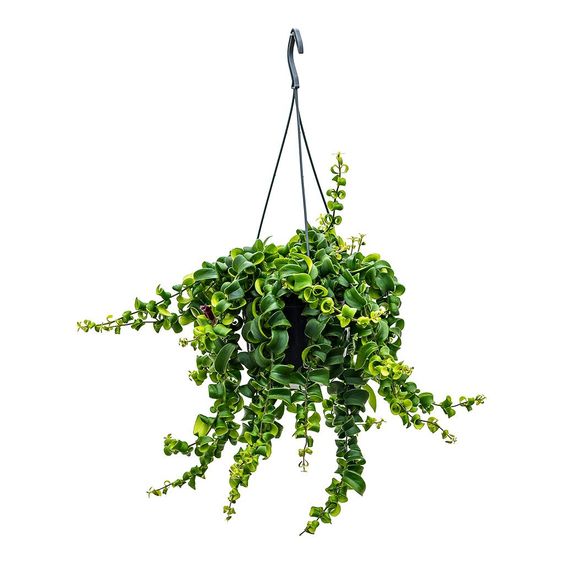 • Where to Place As you probably have observed by now, plants prefer to thrive best in bright, indirect light or somewhat shaded settings. The peperomia creeper plants are also the same! So, hang them from exterior windows or over-covered patio spaces that are somewhat well-lit.
• Where to Place As you probably have observed by now, plants prefer to thrive best in bright, indirect light or somewhat shaded settings. The peperomia creeper plants are also the same! So, hang them from exterior windows or over-covered patio spaces that are somewhat well-lit.
• Basic Care When the top inch of soil is dry, you may water your Peperomia creepers, normally every 1-2 weeks, providing well-draining soil. During the growth season, fertilize regularly with a balanced fertilizer. They enjoy moderate temperatures and humidity levels. For optimal health, prune to limit growth and remove any yellow leaves.
I recommend checking out:
Last Updated on 1 year ago by Anjali Mehra Ph.D. in Horticulture (Punjab Agricultural University)
- Why Lawn Grass Fails After Installation (Real Indian Case Studies) - December 25, 2025
- Nilgiri Grass vs Korean Grass – Price, Look & Maintenance Compared - December 23, 2025
- Delhi Pollution & Dust-Proof Lawn Care Guide - December 20, 2025
